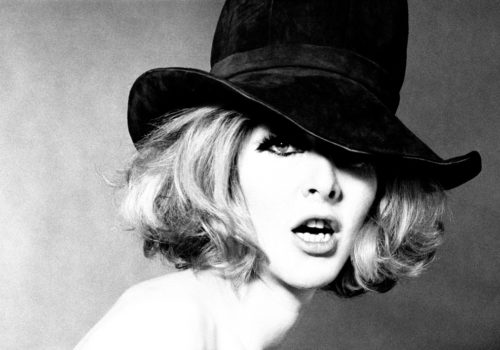Today Ludwig Haskins presents at the University of Coventry a film retracing the life and work of his father, Sam Haskins. To mark the occasion, he shared with us this text and these images:
Sam Haskins (1926 − 2009), the man and his career, were laced with paradox.
A milestone figure in mainstream 20th century photography who came from a small town in the middle of South Africa.
Haskins was a defining figure of 60s photography and a key player in that decade’s sexual liberation. He influenced leading photographers in New York, London, Paris and Tokyo while working from a studio thousands of miles away, in a light industrial building in downtown Johannesburg.
Sam’s legacy as a photographer is not embraced by the art establishment to the same extent as Avedon and Penn but his work is more ‘referenced’ today, especially by fashion photographers, than either Penn or Avedon, both of whom were heroes to Sam.
After his move to London in 1968, Haskins became the pre-eminent colour photo-graphic illustrator of his era and yet the images that have had the most lasting impact on his place in history are the straight black and white, single exposure, photographs – mainly from the sixties.
Sam used a slide show (over 500 medium format slides) set to music to enthral conference and workshop audiences in over 50 cities for decades. It was a photographic experience and very effective pre-internet social networking. More than simply sharing images, the slide show was designed to entertain with its sequences of carefully matched images and music. In fact Sam’s slide show was the perfect distillation, the mature expression, of the primary artistic influence of his youth, the circus.
In the remote railway junction town where Sam grew up, Kroonstad, the only real culture was a twice annual visit of the circus. And that childhood experience of being transported into a magical dark world of sexy celebration, illusion, drama, danger, nature, clowning between acts and athletic brilliance, in essence the execution of apparently impossible feats based on relentless practice, all enhanced with live music, set the standard for many artistic values which he continued to hold dear throughout his life. Sam’s slide show was his own personal one-man travelling circus.
Original ideas – usually created in the studio – became obsessively important to Sam. And yet, his primary artistic signature and the images that have defined his legacy came not from consciously pursuing ‘the new’ but simply from working very instinctively with a model in the studio.
His most important landmark book in the history of photography was his first title. Five Girls, published in 1962, liberated the nude from cliché. With Five Girls Sam offered the photographic world one of the most important artistic offerings of great photography – permission! Great photography not only captures the zeitgeist of an era and says something fresh about photography itself, crucially it also offers permission to see, think, feel, form values in new ways and breaks down barriers of various kinds; perceptual, social, empathic and sexual.
His next book ‘Cowboy Kate and Other Stories’ (1964) was the first art photo book to employ narrative and probably the best selling photo book of all time, with roughly 1 million copies sold in all its editions. ‘Kate’ as it is affectionately referred to, is today, almost 50 years later, one of the most iconic style references not just in photography but to image makers of all sorts.
The third book in the sixties trilogy, November Girl, is described by some gallery owners I speak to, as their favourite photo book, but it remains somewhat eclipsed by the huge fame of ‘Kate’. Sam went on to produce five more books, the last being Fashion Etcetera in 2009. Between 1970 and 2000 he also produced over 30 calendars and although they were all commercial assignments, the projects were based entirely on Sam’s concepts and art direction. The sad part is that although calendars produced regular world wide publishing and exposure in a pre-internet world, the work itself was implicitly disposable.
Despite meeting thousands of people throughout his career and remaining married to his wife Alida, he lived a deeply private life with almost no friends and died alone at home on November 26, 2009. Like so many artists before him the full value of his contribution is only being realised after his death.
Ludwig Haskins, March 2012
Ludwig Haskins, Sam’s son talks about his father’s career and life – at Coventry University. He presents a 90 minute illustrated Podcast and Vimeo title which is available online from today March 15th, 2012.
Podcast download:
Sam-Haskins-talk-by-Ludwig-2011.m4a
Coventry University Photography : photography.covmedia.co.uk
Coventry University PicBod (Picturing the Body) free open course : www.picbod.covmedia.co.uk
















